Cedar Waxwings (Bombycilla cedrorum) are seen here in Northern California every winter, but this year, they were seen in my yard for the first time! Click on photos for full sized images.
The mainstay of the Cedar Waxwing is fleshy fruits and during the winter their diet is almost completely fruit. This dependance on a fruit diet accounts for much of this bird’s migratory and wandering behavior. Range Map courtesy of NatureServe Explorer.
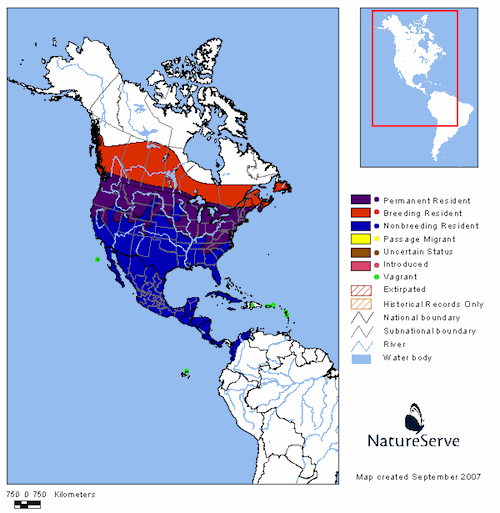
These birds visited my yard for the fruits of my Photinia bushes…
which placed them in a rather dark environment for photography.
However, after filling up on berries they would fly over to the oak trees to roost and preen in what sunshine there was to be had.
As the sun rose a bit higher in the sky and broke through the clouds, the Cedar Waxwings showed more color.
Waxwings get their name from the red, waxlike tips on the secondary flight-feathers of adult birds like the one seen in this photo.
Immature birds like this one, don’t attain the red tips until their second fall.
These red appendages on secondaries of Cedar Waxwings increase in number and size with the bird’s age. This bird with only a few short red tips foraging in the photinia is probably a young adult and, when the time comes, is most likely to breed with another bird of the same age1.
Pairs of older birds nest earlier and raise more young than do immature birds, suggesting that this plumage character is an important signal in mate choice and social organization1.
As I watched and photographed this flock of about fifteen Cedar Waxwings they would also hawk insects from the treetops…
and occasionally visit the waterfall and pond to drink.
After counting about 1,200 American Robins flying over as I photographed these waxwings in my back yard, I stopped by Turtle Bay the following day to see what birds were out and about.
Adjacent to Turtle Bay is the Redding Convention Center which has some red berry bush plantings nearby (if anyone knows what type of bush this is please leave a comment).
I snapped a few shots of these Cedar Waxwings there. This one waiting its turn in a maple tree…
another venturing out on the end of a branch…
and this one sneaking around in the shadows.
They were understandably being coy as an American Robin (Turdus migratorius) arrived at the berry bushes and began chasing the Waxwings off.
You know, Robins like berries too! But that’s another story.
To see more great birds from around the world, check out The Bird D’pot and Wild Bird Wednesday!
References: 1Birds of North America Online

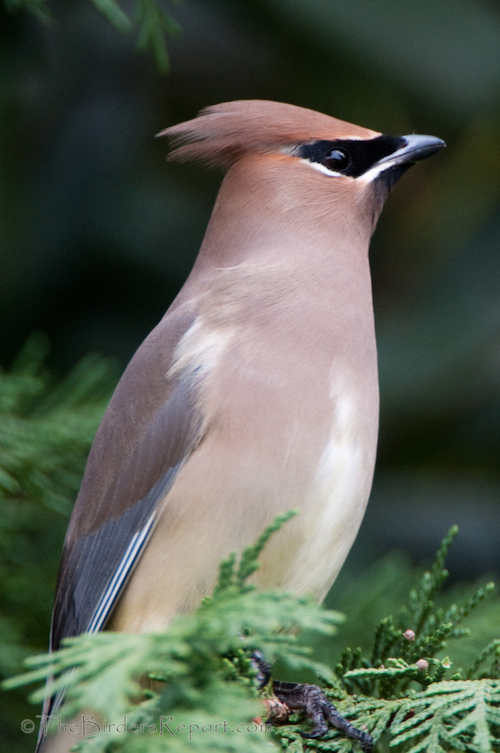
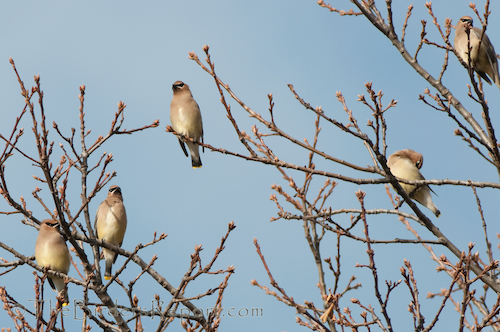
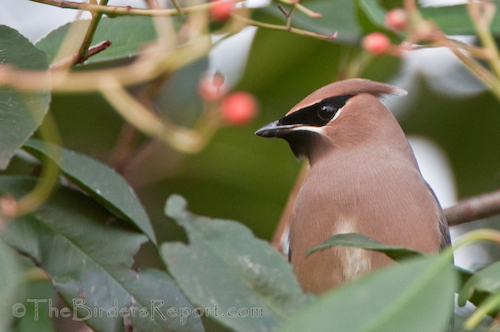
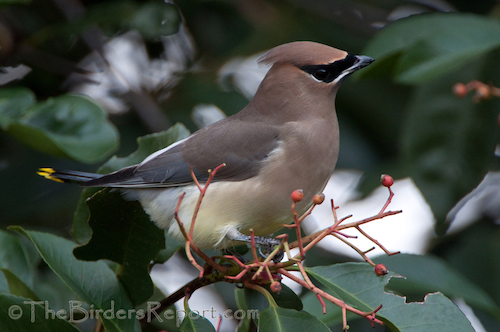
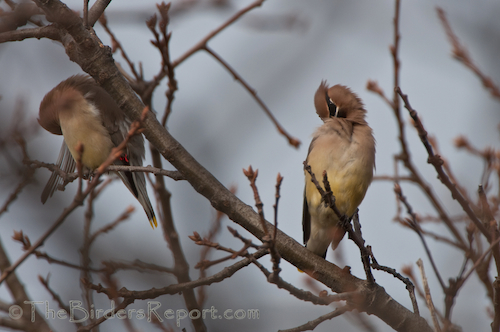
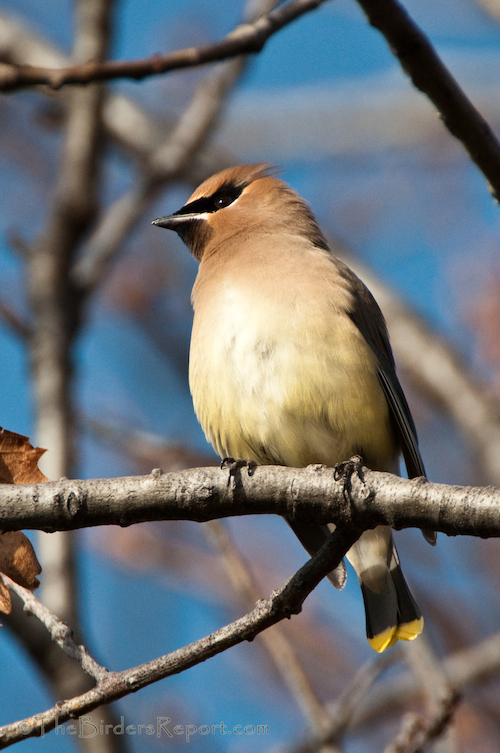
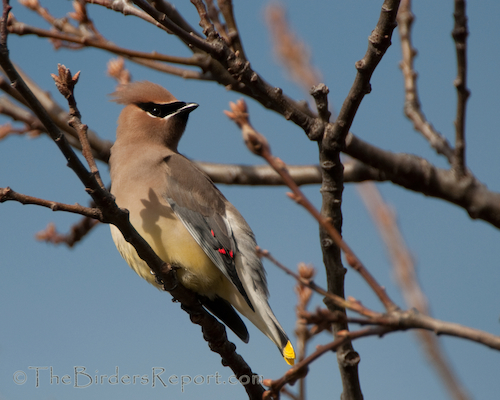
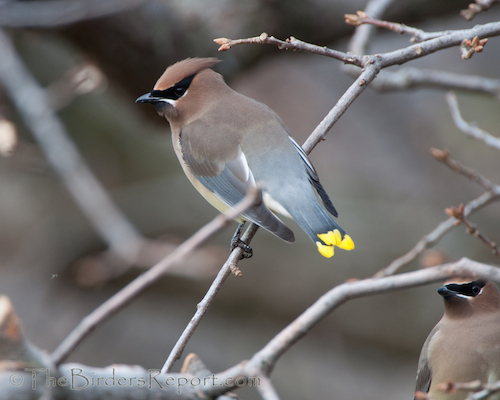
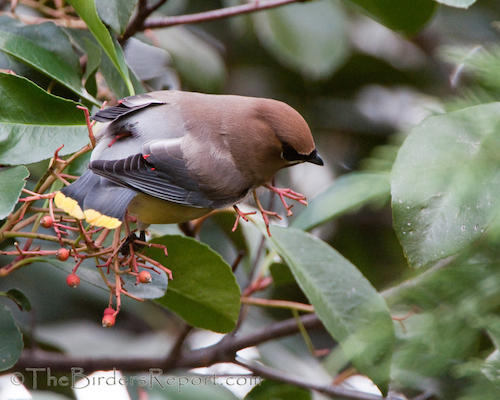
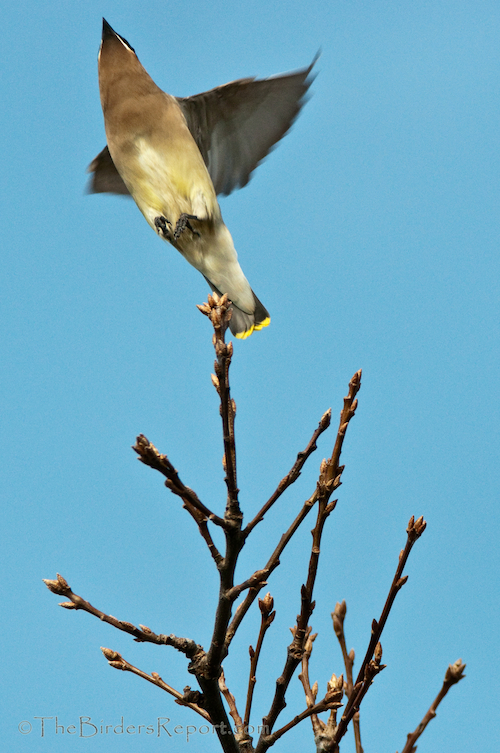
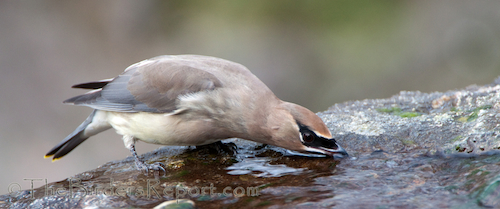
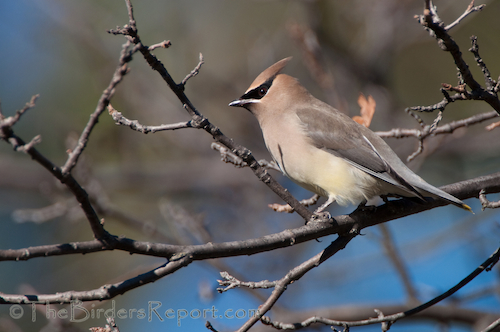
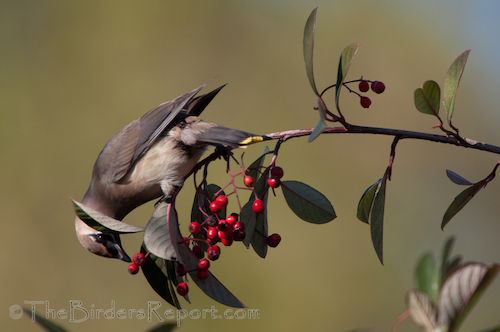
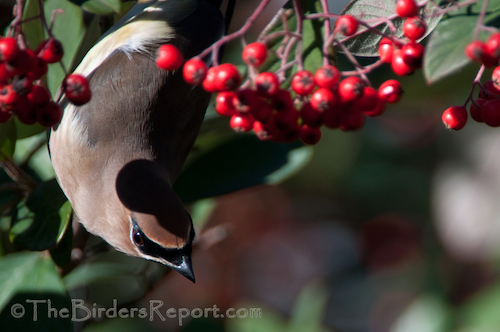
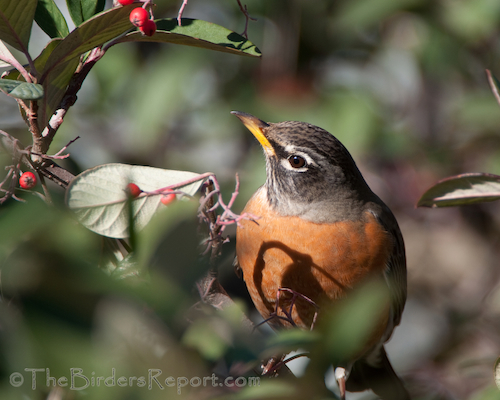








Comments on this entry are closed.
they are so handsome! i love catching sight of them here!
Lovely birds to see and great pictures of them. From Findlay
Larry, great post. I just love the Waxwings. They are beautiful birds. you got some awesome photos too. I wish you all the best in 2013, Happy New Year!
A fabulous series! The first shot is awesome!
Larry, you provided so much wonderful information on one of my favorite birds! And beautiful images! The only one I saw last year was lying dead in my yard, right outside a window. I think he flew into the glass. 🙁 Hopefully, I’ll get to see more of them this spring under better conditions. Good to know they like fruit. I wonder if I could lure them with fresh cut fruit since the only fruit trees I have are satsumas?
Larry,
I love how your New Year got started! I have only seen Waxwings 3X in my whole birding life. I can remember all 3 – when and where.
Nice photos
Dian
The waxwing’s feathers seem so soft and sleek and smooth! Beautiful series of photos!
Beautiful birds and its always good to have some new yard birds.
Wow, awesome yard bird Larry. Great photos too! I’ve only seen them once in Tucson and that was a rare sight.
That is a superb set of pictures – what a garden bird!
I’ll just have to make do with parrots!
Cheers and thanks for linking to WBW.
Stewart M – Melbourne
Love all the waxwings!! Boom & Gary of the Vermilon River, Canada.
Beautiful photos! I am no plant expert, but I enjoy looking up the local plants in lower Placer Co. I believe the berry bushes you asked for comments about may be coffeeberry bushes (Frangula californica), which have leaves with lighter undersides and prominent veins.
Great photo series and info Larry..thanks!
They are strikingly beautiful birds. One showed up with a flock of starlings in our backyard this year.
Great series Happy New Year.
For those whom have followed my blog for long know that Cedar Waxwings are amongst my top 10 favorite birds. These images are really wonderful! This year, I totally missed their passing through my area, other than a very dreary rain filled day, and those images done in a rather different way, shall be presented next week. Happy New Year~
A number of great shots there Larry. I’m so jealous because i never caught up with our Bohemian Waxwings this winter. Those berries look suspiciously like a species of cotoneaster which is very common here, but I don’t know how widespread it is in other continents or the scientific name. I guess if Waxwings eat it, they will spread the plant many, many miles.
Excellent photos! I had my first Cedar Waxwings last year during Spring migration. They unfortunately only stayed for a day, but it was great getting to see them.
Such wonderful, beautiful birds. And you’ve managed to capture them in all their glory AND their daily routines. Outstanding.
Sorry, I am a bit late in paying a visit to you since most of this past week was taking down holiday decorations and catching up on 2 weeks of laundry. Now that our company is gone, I am having a grand ol’ time viewing such fantastic birding posts!!
thanks for linking up at the Bird D’Pot!!
such a handsome bird and wonderful photographs you’ve collected Larry. Then the sweet finale with the robin; equally beautiful birds